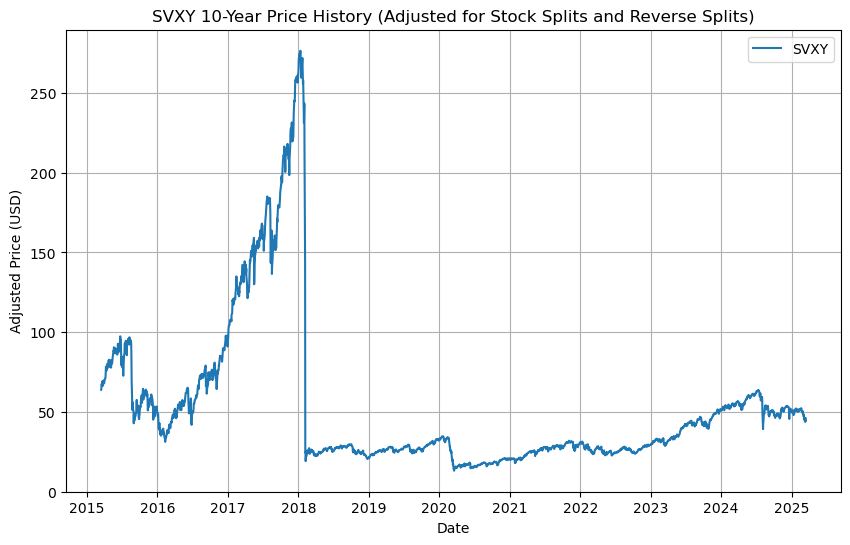SVXY ETF: Comprehensive Risk-Return Analysis and Suitability for Short-Term Investing

Introduction: Understanding SVXY
SVXY (ProShares Short VIX Short-Term Futures ETF) is an inverse ETF targeting investors seeking profit from declining volatility. When market volatility (measured by the VIX index) decreases, SVXY generally appreciates. However, this inverse relationship carries significant risk, especially during market disruptions.
Fundamentals of SVXY
SVXY tracks the inverse (-0.5x) daily performance of short-term VIX futures contracts. Consequently, a decrease in market volatility leads to gains, while sudden volatility spikes may result in considerable losses.
Key Insights: Risk and Return Analysis
Historical Performance Overview
Analysis of SVXY’s five-year historical performance illustrates an upward trajectory during stable market periods and pronounced losses during volatility spikes.

Case Study: The 2018 VIX Shock
On February 5, 2018, a sudden spike in market volatility—known as "Volmageddon"—caused the VIX to surge approximately 120%, triggering an overnight collapse of more than 80% in SVXY and highlighting its vulnerability as a leveraged inverse volatility product during extreme market shifts.

Annual Returns and Volatility
SVXY’s annualized metrics over five years:

Why SVXY is Primarily Suitable for Short-Term Investors
Impact of Contango
SVXY typically benefits from contango in VIX futures—situations where futures contracts are priced higher than the spot index, causing gradual appreciation. However, prolonged exposure amplifies risks associated with unexpected volatility spikes, rapidly eroding accumulated gains.
Long-Term Holding Risks
Holding SVXY over extended periods can lead to substantial losses due to sporadic volatility events, even though short-term periods may demonstrate significant gains. For example, a 5-year investment from 2015 to 2020 resulted in notable losses despite intermittent profits.
Strategic Recommendations for Investing in SVXY
- Short-Term Trading: Capitalizing on volatility declines following market turbulence.
- Hedging Applications: SVXY may be strategically employed as part of broader volatility-management strategies.
- Avoid Prolonged Holding: Limiting holding periods reduces exposure to severe volatility spikes.

The graph compares the cumulative returns of SVXY, VXX, and UVXY over the past five years on a logarithmic scale. SVXY exhibits relative stability and gradual growth, reflecting its inverse-volatility structure. In contrast, VXX and particularly UVXY show significant decay due to volatility drag, with UVXY's extreme decline clearly highlighting the effects of leveraged exposure. The logarithmic scale emphasizes proportional changes, effectively illustrating performance divergence across volatility regimes.
Conclusion: Appropriate Investor Profile for SVXY
SVXY can offer considerable returns for experienced traders familiar with volatility dynamics. Nonetheless, given its inherent risks, it remains most suitable for short-term traders actively managing their positions and prepared for sudden market changes.